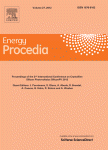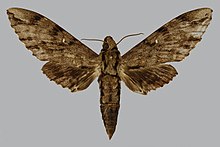실로스마
Xylosma| 실로스마 | |
|---|---|
 | |
| 자일로스마 하와이엔세 | |
| 과학적 분류 | |
| 왕국: | |
| (순위 미지정): | |
| (순위 미지정): | |
| (순위 미지정): | |
| 주문: | |
| 패밀리: | |
| 부족: | |
| 속: | 실로스마 |
| 모식종 | |
| 오비쿠라타자루 | |
| 종. | |
| 약 100, 텍스트 참조 | |
| 동의어 | |
Xylosma /zaˈlzzm//[4]는 버드나무과에 [3]속하는 현화 식물이다.그것은 보통 붓홀리, 실로스마, 또는 더 모호하게는 "통나무"로 알려진 약 100종의 상록 관목과[5] 나무를 포함하고 있습니다.The generic name is derived from the Greek words ξύλον (xylon), meaning "wood," and ὀσμή (osmé), meaning "smell,"[6] referring to the fragrant wood of some of the species.[5]Takhtajan 시스템은 그것을 Flacourtiaceae과로 [7]분류하며, Angiosperm Phylogeny [3]Group에 의해 소멸된 것으로 간주한다.
묘사
잎은 어긋나며 단순하며 전체 또는 미세한 톱니 모양이며 길이는 2-10cm이다.꽃은 작고 노란색이며 길이 1-3cm(0.39-1.18인치)의 총상 꽃차례에서 생산되며 보통 [8]암수성이며 강한 향기를 가지고 있다.열매는 직경 5~10mm(0.20~0.39인치)의 작은 보라색-검은색 베리로 2~8개의 [5]씨앗을 포함하고 있다.
범위
이 속은 주로 카리브해, 중앙아메리카, 남미 북부, 태평양 제도, 아시아 남부 및 호주 북부에서 온 열대 [5]및 아열대가 원산지입니다.X. congestum과 X. japonicum 두 종은 따뜻한 동아시아에서 발견됩니다.분자 계통학 분석에 따르면 뉴칼레도니아산 라시오클라미속은 실로스마에 [9]내포되어 있을 수 있다.
생태학
자일로스마 잎은 X. 라세모사를 먹는 촌충(큐파 에리마니스)과 X. 롱이폴리움과 X. 라세모사를 먹는 일반적인 표범(팔란타 팔란타)과 같은 일부 나비도프테라의 애벌레가 먹이로 사용합니다.
사용하다
이 속은 사막과 채파랄 기후의 정원사들 사이에서 생울타리 식물과 토피식물로 주로 사용된다.자일로스마 폭주종은 가시 돋친다는 사실에도 불구하고 정원 울타리나 도로 조경에서 주로 볼 수 있는 종이다.이러한 목적을 위해 재배되는 다른 종으로는 X. bahamensis, X. flexuosa,[5] X. etherophylum 등이 있다.롱기폴륨은 때때로 인도에서 식용 [10]과일을 위해 재배된다.또한, 어린 잎에서 진통제, 마취제,[11] 진정제 역할을 하는 약용 추출물이 만들어집니다. 이 속의 15종은 약용 또는 수의용으로 보고되었습니다.[12]
선택된 종
- Xylosma bahamensis (Britton) 스탠들.– 바하마 자일로스마(바하마)[16]
- 키로스마볼리비아눔 슬레이머
- 자일로스마 불린대 슬레머(뉴칼레도니아)
- 자일로스마 북시폴리아 A.회색 – 박스 리프 자일로스마(캐리비안)[16]
- 자일로스마 카필리페스 기요민(뉴칼레도니아)
- 실리아티폴리아 (Clos) 아이클러
- Xylosma congestum(루르). 메릴 – 빛나는 실로즈마
- 자일로스마 크레나툼 H. St.존 – 톱니 통나무(하와이의 카우아이)
- 자일로스마 포세티 우르브 (자마이카)
- Xylosma flexuosa (Kunth) Hemsl. – 브러시홀리 (멕시코, [5]중앙아메리카)
- 자일로스마 글라버림 슬레이머(브라질)
- 자일로스마그로세크레나툼(슬리머)레스코트(뉴칼레도니아)
- Xylosma hawaiense see. – 하와이안 붓꽃, 마우아(하와이)
- 헤테로필럼(Xylosma heterophyllum) 길그 (콜롬비아)[5]
- 자일로스마 이네키네르비움 슬레이머 (뉴칼레도니아)
- 자일로스마자포니쿰 (THUNB)A.Gr.
- 자일로스마 카알렌세 슬레머 (뉴칼레도니아)
- 자일로스마 라티폴륨 J.홍콩 & 톰스 (인도)
- 자일로스마롱이폴리움클로(히말라야 서부)[10]
- 자일로스마 마데니
- 자일로스마 스컬럼 슬레이머 (뉴칼레도니아)
- 자일로스마오보바툼(카르스텐) 트리아나&플랜촌(콜롬비아)
- 자일로스마오비큘라타(J.R.Forst & G.Forst.) G.Forst. (피지, 통가, [17]니우에)
- 자일로스마오바툼
- 자일로스마 파키필룸(크루그 & 어브) Urb. – 가시나무(푸에르토리코)
- 자일로스마 파라와넨시 멘드 (필리핀)
- 자일로스마 파나멘시스 터츠.
- 자일로스마파비폴리움 제섭
- 자일로스마펠타툼(슬레머)레스코트(뉴칼레도니아)
- Xylosma pininsulare Guillaumin (뉴칼레도니아)
- 키로스마프로키아 (터치)터츠.
- Xylosma proctorii Sleumer (자마이카)
- 카이로시무사알즈만니 슬레이머
- 자일로스마 레이스모사 (Siebold & Zucc).미크
- 자일로스마 루이자넘 슬레이머(페루)
- 자일로스마 살즈마니 아이히
- Xylosma Samoense Sleumer (Savai'i)
- 자일로스마 샤페리오이데스 A.회색 – 흰색 통나무(대안틸레스)[16]
- Xylosma Schwaneckeana Urb. – 슈바넥 통나무(푸에르토리코)[16]
- 자일로스마센티코사 한스
- 자일로스마 서펜티넘 슬레이머 (뉴칼레도니아)
- 시로스마세라타 (SW) Urb.
- 시로스마시물란스 ACSM
- 시로스마 스파이슐리페라(Tul) 트리아나 플랜치 (콜롬비아)[10]
- Xylosma terrae-reginae C.T. White & Sleumer (NSW 및 퀸즐랜드, 호주)
- 자일로스마 투베르쿨라툼 슬레이머(뉴칼레도니아)
- 자일로스마 트위디아눔 (Clos) 아이클러
레퍼런스
- ^ "Genus Xylosma". Taxonomy. UniProt. Retrieved 2010-01-31.
- ^ a b "!Xylosma G. Forst". TROPICOS. Missouri Botanical Garden. Retrieved 2010-03-05.
- ^ a b c "Genus: Xylosma G. Forst". Germplasm Resources Information Network. United States Department of Agriculture. 2007-10-05. Retrieved 2010-01-31.
- ^ Brenzel, K. N. (1995). Sunset Western Garden Book (6 ed.). Sunset Publishing Corporation. pp. 606–07. ISBN 978-0-376-03851-7.
- ^ a b c d e f g Everett, T. H. (1982). The New York Botanical Garden Illustrated Encyclopedia of Horticulture. Vol. 10. Taylor & Francis. p. 3572. ISBN 978-0-8240-7240-7.
- ^ Quattrocchi, U. (2000). CRC World Dictionary of Plant Names: Common Names, Scientific Names, Eponyms, Synonyms, and Etymology. Vol. IV R-Z. Taylor & Francis US. p. 2857. ISBN 978-0-8493-2678-3.
- ^ Takhtajan, A. (2009). Flowering Plants (2 ed.). Springer. p. 226. ISBN 978-1-4020-9608-2.
- ^ "Xylosma G. Forster, Fl. Ins. Austr. 72. 1786". Flora of China. eFloras.org. Retrieved 2010-02-03.
- ^ 앨포드, MA(2005년).플라쿠르티아과의 계통학 연구.2005년 코넬 대학교 박사 학위 논문.
- ^ a b c P. Hanelt, ed. (2001). Mansfeld's Encyclopedia of Agricultural and Horticultural Crops (Except Ornamentals). Vol. 3. Springer. p. 1374. ISBN 978-3-540-41017-1.
- ^ Khare, C. P. (2007). Indian Medicinal Plants: An Illustrated Dictionary. Springer. p. 725. ISBN 978-0-387-70637-5.
- ^ Duarte-Casar, Rodrigo; Romero-Benavides, Juan Carlos (January 2022). "Xylosma G. Forst. Genus: Medicinal and Veterinary Use, Phytochemical Composition, and Biological Activity". Plants. 11 (9): 1252. doi:10.3390/plants11091252. ISSN 2223-7747. PMC 9103172. PMID 35567253.
- ^ "GRIN Species Records of Xylosma". Germplasm Resources Information Network. United States Department of Agriculture. Retrieved 2010-01-31.
- ^ "Xylosma". Integrated Taxonomic Information System. Retrieved 2010-01-31.
- ^ "Subordinate Taxa of !Xylosma G. Forst". TROPICOS. Missouri Botanical Garden. Retrieved 2010-01-31.
- ^ a b c d Grandtner, M. M. (2005). Elsevier's Dictionary of Trees. Vol. 1. Elsevier. pp. 969–972. ISBN 978-0-444-51784-5.
- ^ Heads, M. (2006). "Seed plants of Fiji: an ecological analysis" (PDF). Biological Journal of the Linnean Society. 89 (3): 459. doi:10.1111/j.1095-8312.2006.00682.x. Retrieved 2010-03-05.


